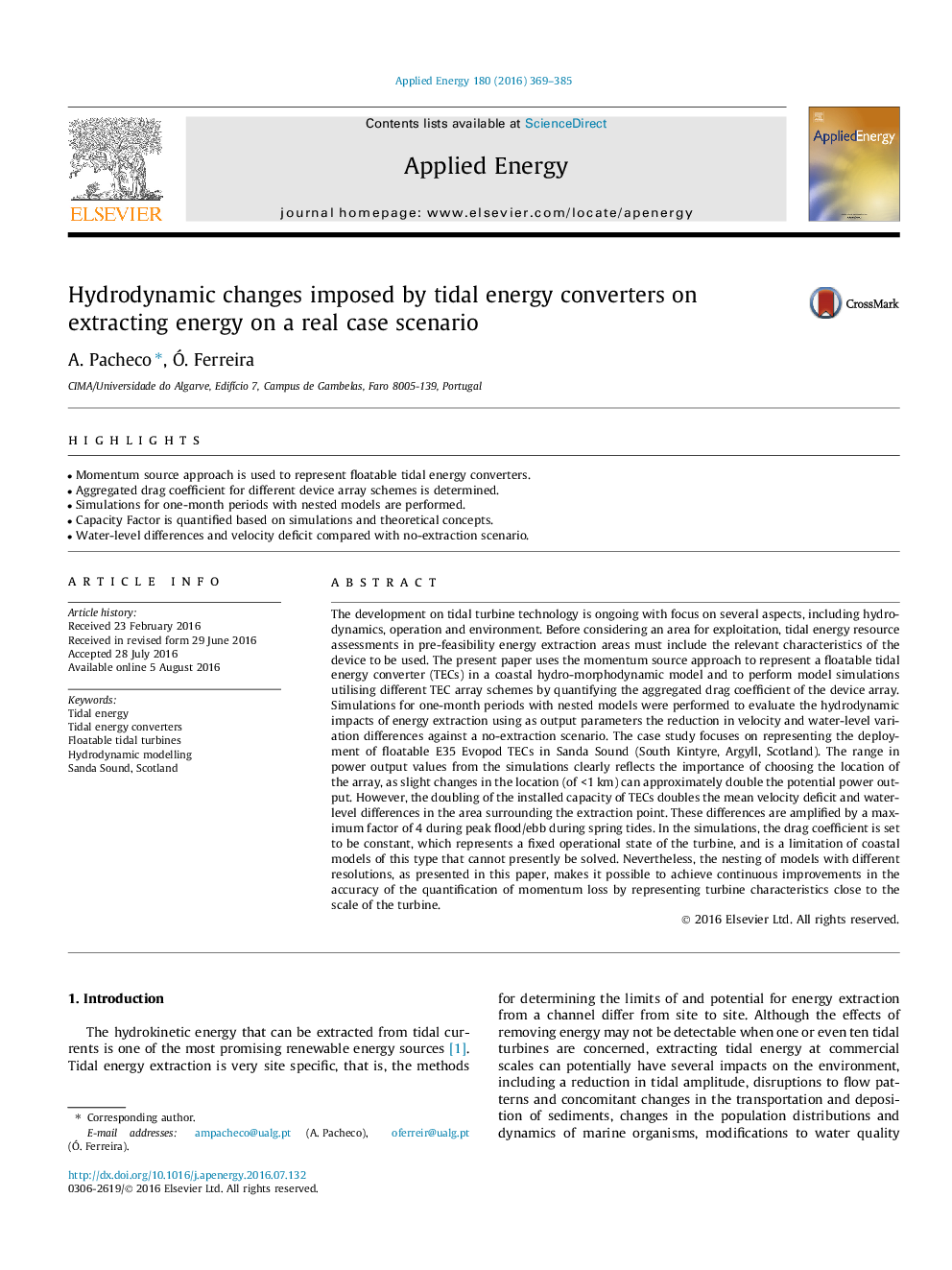| کد مقاله | کد نشریه | سال انتشار | مقاله انگلیسی | نسخه تمام متن |
|---|---|---|---|---|
| 6682100 | 501845 | 2016 | 17 صفحه PDF | دانلود رایگان |
عنوان انگلیسی مقاله ISI
Hydrodynamic changes imposed by tidal energy converters on extracting energy on a real case scenario
ترجمه فارسی عنوان
تغییرات هیدرودینامیکی بوسیله مبدل های انرژی جزر و مدی که بر روی انرژی استخراج شده در یک سناریوی واقعی واقع شده اند
دانلود مقاله + سفارش ترجمه
دانلود مقاله ISI انگلیسی
رایگان برای ایرانیان
کلمات کلیدی
انرژی جزر و مدی، مبدل های انرژی جزر و مدی، توربین های جزر و مد شناور مدل سازی هیدرودینامیکی، ساندای صدا، اسکاتلند،
موضوعات مرتبط
مهندسی و علوم پایه
مهندسی انرژی
مهندسی انرژی و فناوری های برق
چکیده انگلیسی
The development on tidal turbine technology is ongoing with focus on several aspects, including hydrodynamics, operation and environment. Before considering an area for exploitation, tidal energy resource assessments in pre-feasibility energy extraction areas must include the relevant characteristics of the device to be used. The present paper uses the momentum source approach to represent a floatable tidal energy converter (TECs) in a coastal hydro-morphodynamic model and to perform model simulations utilising different TEC array schemes by quantifying the aggregated drag coefficient of the device array. Simulations for one-month periods with nested models were performed to evaluate the hydrodynamic impacts of energy extraction using as output parameters the reduction in velocity and water-level variation differences against a no-extraction scenario. The case study focuses on representing the deployment of floatable E35 Evopod TECs in Sanda Sound (South Kintyre, Argyll, Scotland). The range in power output values from the simulations clearly reflects the importance of choosing the location of the array, as slight changes in the location (of <1Â km) can approximately double the potential power output. However, the doubling of the installed capacity of TECs doubles the mean velocity deficit and water-level differences in the area surrounding the extraction point. These differences are amplified by a maximum factor of 4 during peak flood/ebb during spring tides. In the simulations, the drag coefficient is set to be constant, which represents a fixed operational state of the turbine, and is a limitation of coastal models of this type that cannot presently be solved. Nevertheless, the nesting of models with different resolutions, as presented in this paper, makes it possible to achieve continuous improvements in the accuracy of the quantification of momentum loss by representing turbine characteristics close to the scale of the turbine.
ناشر
Database: Elsevier - ScienceDirect (ساینس دایرکت)
Journal: Applied Energy - Volume 180, 15 October 2016, Pages 369-385
Journal: Applied Energy - Volume 180, 15 October 2016, Pages 369-385
نویسندگان
A. Pacheco, Ã. Ferreira,
